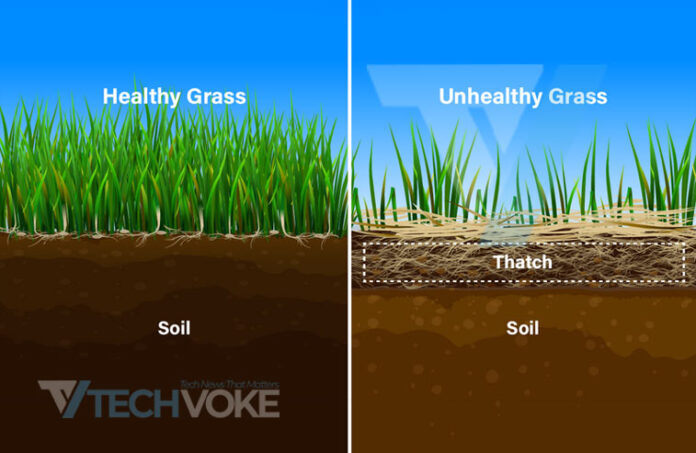Most homeowners know that a healthy lawn requires regular maintenance. Unfortunately, many of us don’t understand exactly what we’re dealing with when it comes to lawn care. One of the most mysterious issues can be thatch—so what is it, and how do you best deal with it? Let’s take a closer look.
What is Thatch?
Thatch is an accumulation of dead grass stems and roots that form a tightly-packed layer between the soil and the living grass blades. This layer can build up over time, blocking water, air, and other essential nutrients from reaching the roots of your lawn. In some cases, it can also provide a safe haven for pests or disease-causing organisms.
Thatch isn’t always bad, though; in fact, a thin layer of thatch helps protect your lawn from extreme temperatures while providing cushioning for activities like mowing and walking. As long as it’s kept at manageable levels (1/2 inch or less), thatch can actually be beneficial for your lawn!
Where Does Thatch Come From?
Most of the time, too much thatch is caused by over-fertilizing or over-watering your lawn. Other contributing factors include excessive use of broadleaf herbicides or insecticides and improper aeration techniques. Additionally, certain grass varieties are more prone to thatching than others including bentgrass, rye grasses, fescues and bluegrasses—so keep this in mind when selecting your turf type!
How Do I Deal With Thatch?
There are several ways to get rid of excess thatch in your lawn without damaging the underlying soil or grass blades. Here are some of the best methods:
Mow high: Raising your mower blade to its highest setting will help reduce stress on the grass plants, reducing their need to produce excess shoots and stolons (the stems which grow above ground). This method will also help reduce compaction since there’s less pressure on the ground with each pass of the mower blades.
Use a dethatcher: A dethatching machine uses rotating blades or tines to remove the dead material from between your soil and living turf blades. Make sure to go slowly so you don’t damage any live tissue!
Aerate: Aerating helps open up compacted soil so water and nutrients can reach down deep into your lawn’s root system where they’re most needed. Be sure not to go too deep when aerating so you don’t disturb any underground structures like utility lines or septic tanks!
Top dress: Adding layers of organic matter such as compost over areas affected by thatch will help improve drainage while adding beneficial microbes which break down organic matter into useful nutrients for plants.
Overseed & fertilize: Overseeding with drought-resistant varieties such as fescue or bluegrass will help crowd out weeds while fertilizing encourages healthy growth habits in existing turf plants.
Water deeply & infrequently: Deep watering encourages deeper root growth while infrequent watering helps reduce fungal diseases which contribute to excessive thatch buildup.
Use natural pest control methods whenever possible: Pesticides kill off beneficial insects which help keep pests under control naturally – replacing them with natural predators wherever possible will help maintain balance in your yard.
Reduce fertilizer input if possible: Using slow release forms instead of quick release ones will greatly reduce runoff into nearby waterways as well as reduce nutrient overload in your soil.
Conclusion
Thatch can be both helpful and detrimental when it comes to maintaining a healthy lawn – understanding what it is and how best to deal with it is key! The good news is there are plenty of ways to manage excess thatch without resorting to harsh chemicals or drastic measures – start by raising your blade height before moving on to aeration & dethatching if necessary.
Finally, remember to always practice responsible watering & fertilization techniques whenever possible these small steps will go a long way towards keeping your yard looking great for years to come! Check out this Illinois lawn care provider for more information.
For more information follow our website.


